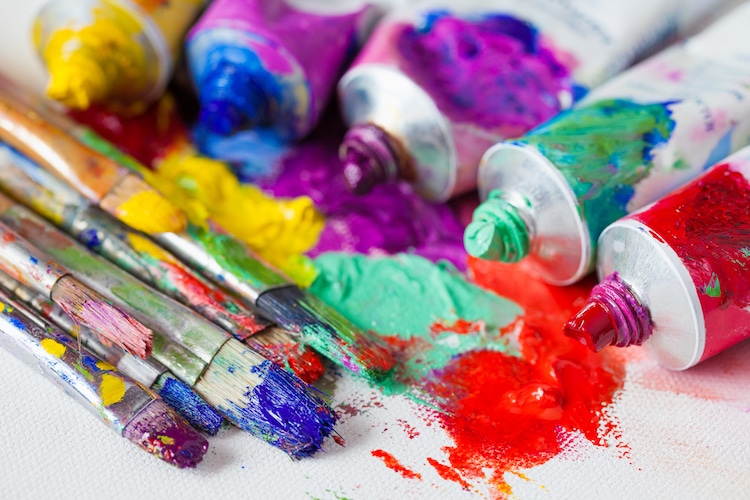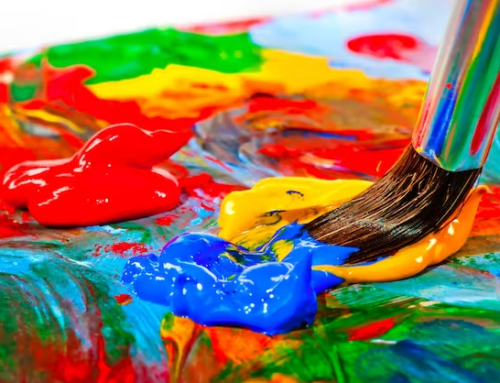
Getting Started: Oil Paints
Teaching a child how to use oil paints can be a fun and rewarding experience. Here are some tips to help get started:
- Safety first: Oil paints can be toxic, so be sure to supervise your child and make sure they are working in a well-ventilated area. Also, make sure they wear protective clothing, such as an apron, to avoid getting paint on their clothes.
- Start with the basics: Before diving into painting, teach your child about the materials and tools they will need. Show them how to properly clean and care for their brushes and palette.
Here are some basic tools that every oil painter needs to get started:
- Paintbrushes: A variety of paintbrushes in different sizes and shapes is essential for oil painting. Round, flat, and filbert brushes are some common shapes that you may find useful.
- Palette: A palette is used to hold and mix paint. It can be made of plastic, glass, or wood and should be large enough to mix colors and allow for easy access to the paint.
- Palette Knife: A palette knife is a flat, flexible tool that is used to mix and apply paint. It is useful for creating texture and can also be used to clean the palette.
- Canvas: A canvas is the surface on which you will paint. Stretched canvases are the most popular option for oil painting, but canvas boards or canvas pads can also be used.
- Solvent: Solvents such as mineral spirits or turpentine are used to thin the paint, clean brushes, and remove mistakes. It is important to use solvents in a well-ventilated area and to follow proper safety precautions.
- Medium: A medium is a substance that is added to the paint to modify its texture or drying time. Some popular mediums include linseed oil, walnut oil, and stand oil.
Practice on paper (But don’t forget to prime it first): Encourage your child to practice mixing colors and experimenting with brush strokes on paper before moving onto canvas. This will help them get a feel for the medium and develop their skills without the pressure of creating a finished piece.
Choose a subject: Once your child is comfortable with the materials, help them choose a subject to paint. This could be anything from a still life to a landscape or portrait. Encourage them to think about composition and color as they work.
Have fun: Most importantly, encourage your child to have fun and experiment with their painting. Let them explore their creativity and enjoy the process of creating something beautiful.
Remember that oil paints can be messy and take time to dry, so be patient and allow plenty of time for the paint to dry before moving on to the next step. With practice and patience, your child can develop their skills and create beautiful works of art with oil paints.
*A note about priming*
Priming is an important step and should never be skipped.. Even if it’s your first day painting with oils or are just practicing. Primer, or ground, changes the way the brush feels on the surface you are using and, depending on the color of the primer can change the way the colors look.
- It improves adhesion: Priming the canvas creates a surface that the paint can adhere to more easily. Without a proper primer, the paint may not stick well to the canvas and could easily flake off or crack over time.
- It prevents paint absorption: The canvas fibers are absorbent and may soak up the oil from the paint, making it difficult to achieve the desired texture and color. Priming helps to prevent this absorption and allows the paint to sit on the surface, making it easier to work with.
- It Protects the canvas: A primer can protect the canvas from the acidic nature of the oil paint, which can cause the canvas to deteriorate over time.
- It provides a consistent base: Priming creates a consistent base color and texture across the canvas, making it easier to apply paint evenly and ensuring that the colors are true to their intended appearance.






Leave A Comment